Edexcel IGCSE Physics
1/200
There's no tags or description
Looks like no tags are added yet.
Name | Mastery | Learn | Test | Matching | Spaced |
|---|
No study sessions yet.
201 Terms
average speed =
distance / time
v = d / t
Standard Unit for mass (m)
kilogram
(kg)
Standard Unit for distance (d) or displacement (s)
metre
(m)
Standard Unit for speed (s) or velocity (v)
metre/second
(m/s)
Standard Unit for acceleration (a)
metre/second²
(m/s²)
Standard Unit for Force (F)
Newton
(N)
Standard Unit for time (t)
Second
(s)
Standard Unit for gravitational field strength (g)
Newton/kilogram
(N/kg)
Standard Unit for moment
(Paper 2 Only)
Newton metre
(Nm)
Standard Unit for momentum (p)
(Paper 2 Only)
kilogram metre/second
(kg m/s)
What does the gradient of a distance-time graph represent?
Gradient or the slope gives the speed.
Flat line means stationary, straight line means constant speed, curved line means accelerating
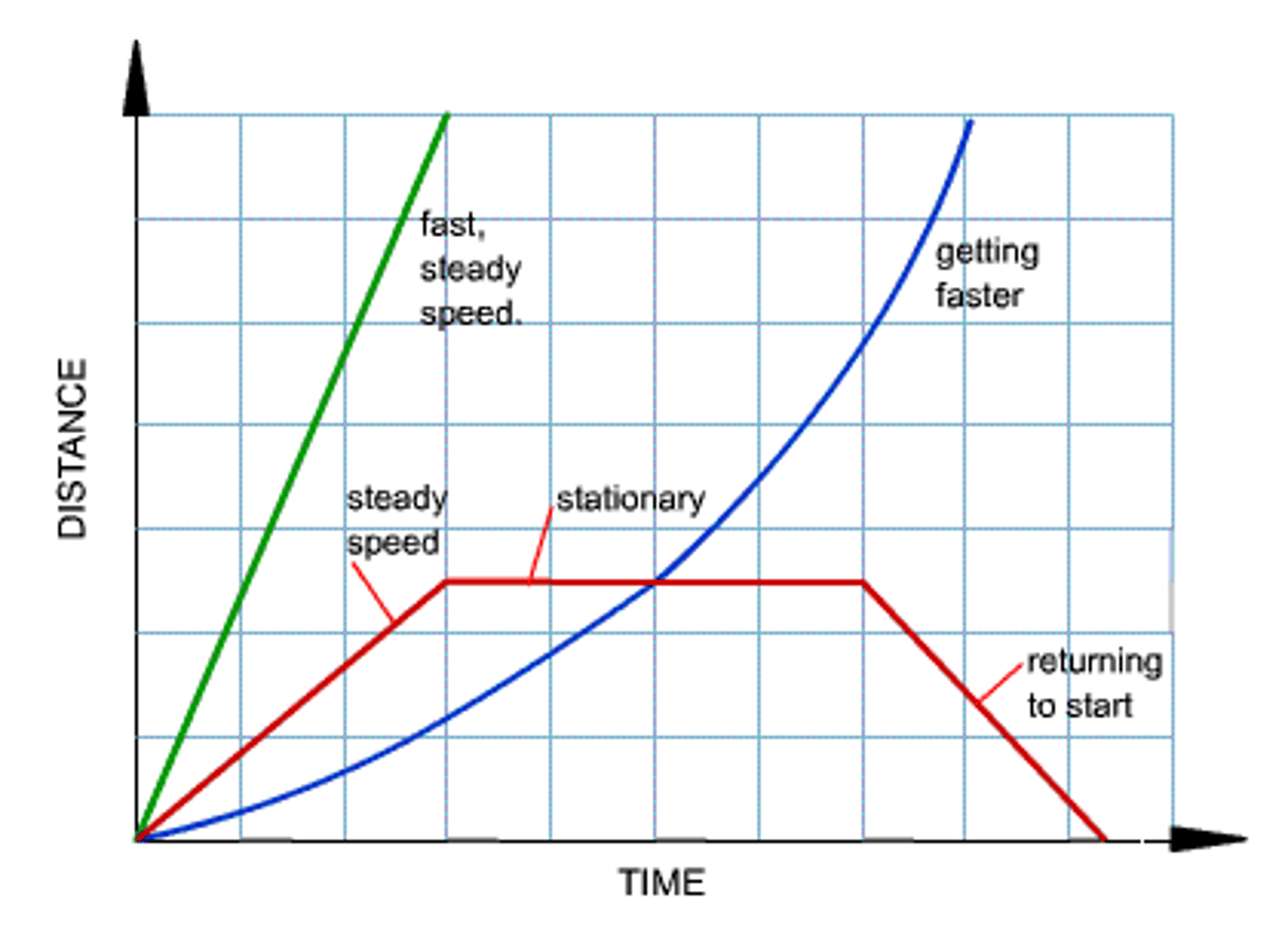
Describe how to investigate the motion of a toy car
- Set a ramp up so that the top of it is a certain height, h, above the desk, and the other end is fixed in place on the desk.
- Measure the distance the toy car will travel down the ramp using a metre ruler.
- Measure the time taken for the toy car to roll down the ramp using a stop watch.
- As it is difficult to start and stop the watch at exactly the right time, the experiment is repeated five times so an average time can be calculated.
- Divide the distance by the average time to calculate the average speed of the car.
- To improve the accuracy of the experiment, light gates connected to electronic timers could be used as human reaction times will no longer affect the results. We still take multiple readings as the car may not have been released in exactly the same way each time.
- An electronic timer that reads to more decimal places will give the answer to a greater level of precision.
Acceleration =
Change in velocity/time taken
a = (v-u) / t
What does the gradient of a velocity-time graph represent?
What does the area underneath the line represent?
gradient = acceleration
flat line = constant velocity
straight lines = constant acceleration (changing velocity)
area under graph = distance travelled
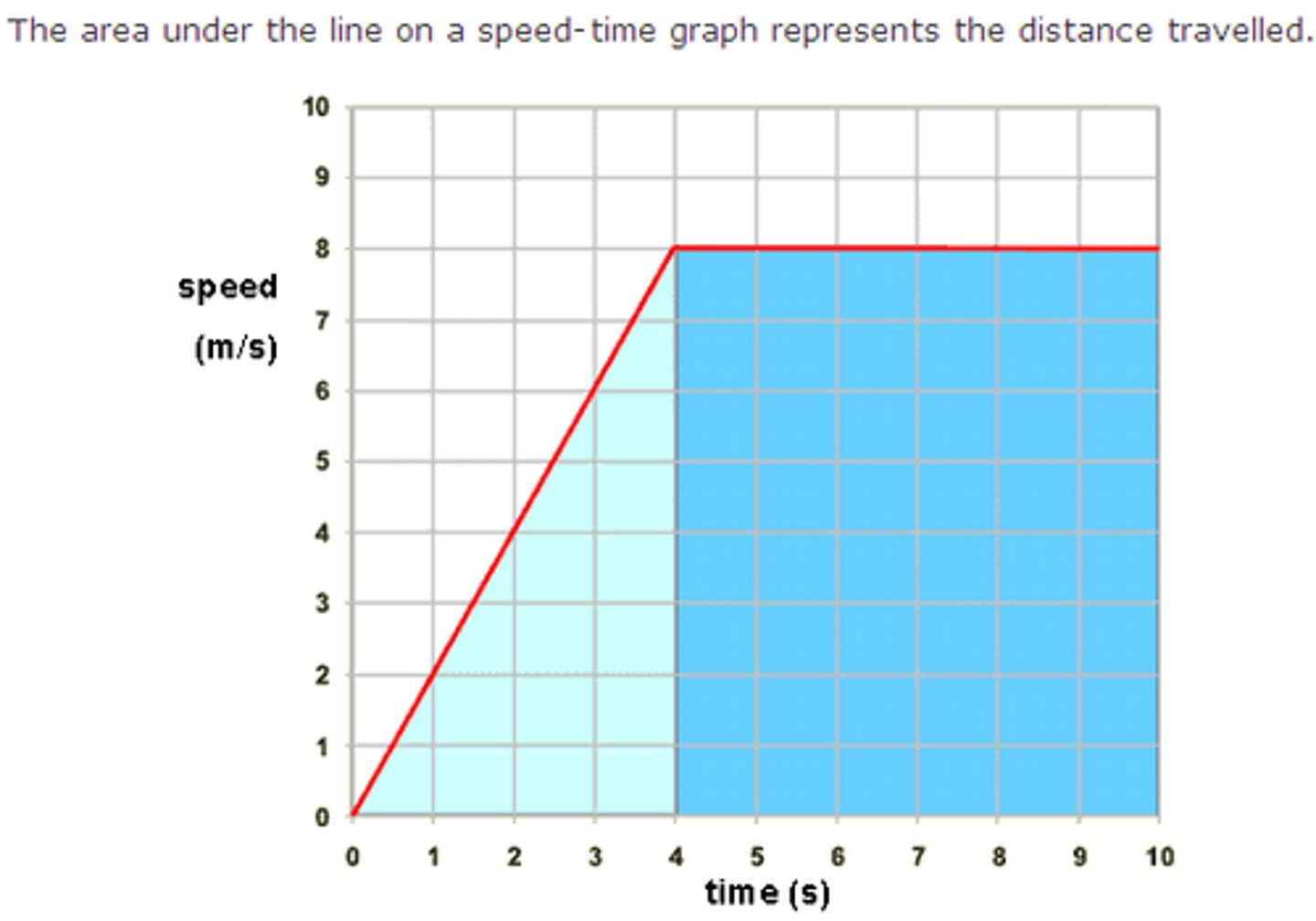
(final speed)² =
(initial speed)² + (2 x acceleration x distance)
v² = u² + (2 x a x s)
(This equation is given to you)
A force can change an objects....
- speed
- shape
- direction
Types of force....
Gravitational (Weight)
Electrostatic
Magnetic
Friction
Air Resistance (Drag)
Upthrust (from fluids)
Reaction (from solids)
Engine force
(and more...)
What is Scalar?
Give some examples
A measurement with just magnitude.
Time, distance, temperature, mass, energy, charge, area, volume, frequency etc.
What is a Vector?
Give some examples
A measurement with magnitude and direction.
Velocity, acceleration, force, weight, momentum, etc.
There is an unbalanced force
when 2 or more forces acting on an object are uneven
Resultant Force is.....
The combination of all forces acting on an object.
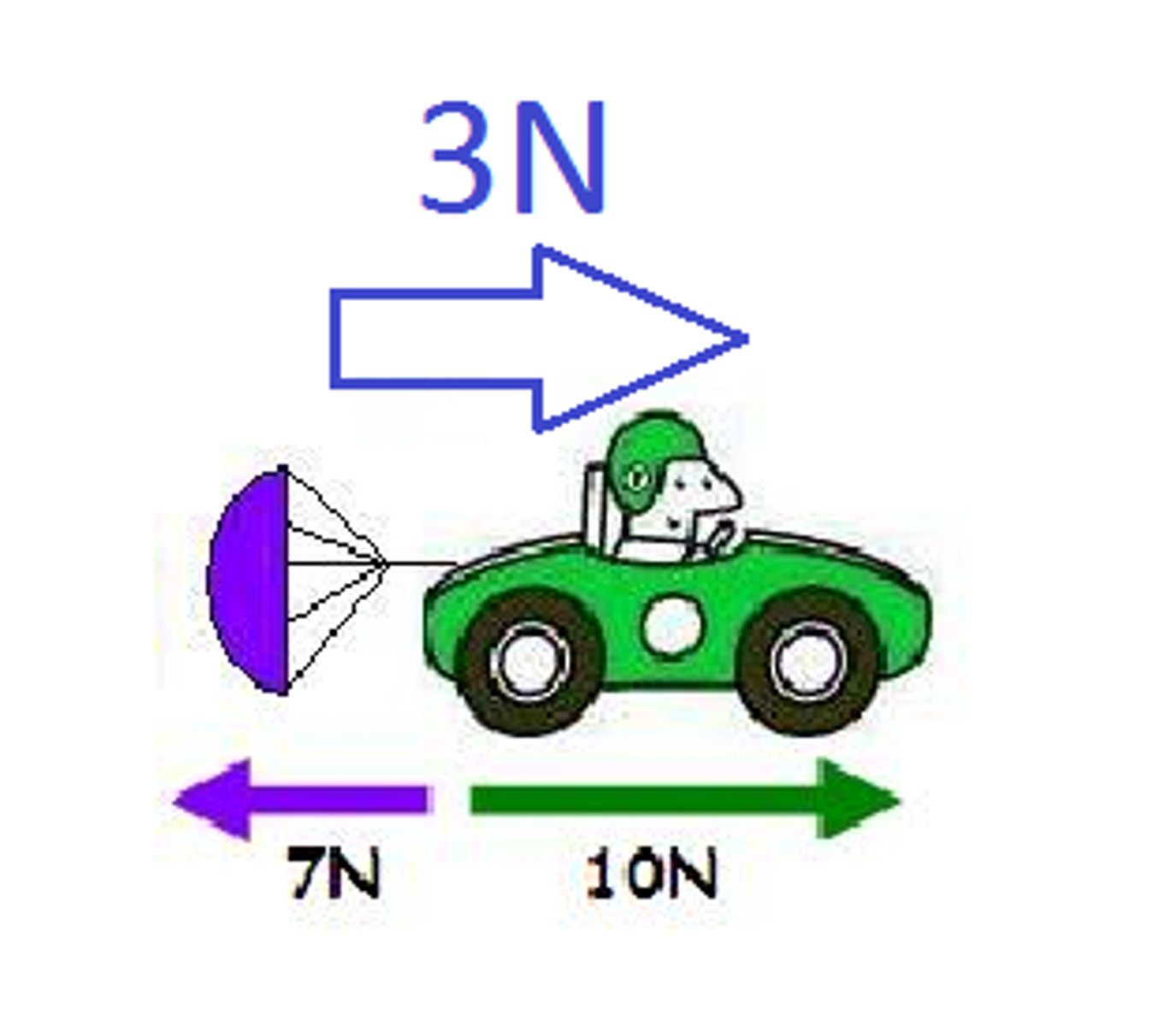
Newton's 2nd Law: Force =
mass x acceleration
F = m x a
Newton's 2nd Law: Acceleration
force / mass
a = F / m
Newton's 2nd law: Mass
force / acceleration
m = F / a
Weight =
mass x gravitational field strength
W = m x g
Friction and Air Resistance act in what direction?
The direction that opposes motion (e.g. if an object is falling then air resistance is acting upwards)
Stopping Distance =
Thinking Distance + Braking Distance.
It is the total distance for the car to come to a complete stop
What is Thinking Distance? What factors affect it?
The distance taken for the driver to react and apply the brakes.
- Tiredness, Alcohol or drugs, Distractions, Age, Poor Visibility (e.g. fog), Reaction Time
What is Braking Distance? What factors affect it?
The distance traveled while the braking force stops the car.
- Speed, Condition of the tires and brakes, Condition of the road surface (including weather conditions such as ice or water on the road), Mass of the vehicle
What is Terminal Velocity? What is the Resultant force on an object traveling at Terminal Velocity? What forces are acting on an object falling at Terminal Velocity?
Where an object reaches a maximum constant velocity. The forces on the object are balanced and so the resultant force is Zero Newtons.
As an object falls, its weight causes it to accelerate. As it gets faster, the air resistance increases until it balances the weight of the object. At this point the forces are balanced and it no longer accelerates.
Describe how to investigate how the extension of an object, such as a spring, varies with applied force.
- Clamp a spring onto a stand, such that it is hanging vertically down.
- Measure the spring's original length.
- Place a known weight (100g = 1N) on to the end of the spring and measure how far it has extended. A pointer attached to the spring (fiducial marker) can help to reduce parallax errors.
- Repeat the process by adding one weight at a time and measuring the extended length each time.
- Calculate the extension for each weight (Extension = extended length - original length)
- Plot a graph of force against extension
- Draw a line of best fit. It should be a straight line through the origin. If it is, then the extension is proportional to the applied force, and the spring is said to obey Hooke's law.
- The Spring Constant can be calculated by dividing the change in Force by the extension.
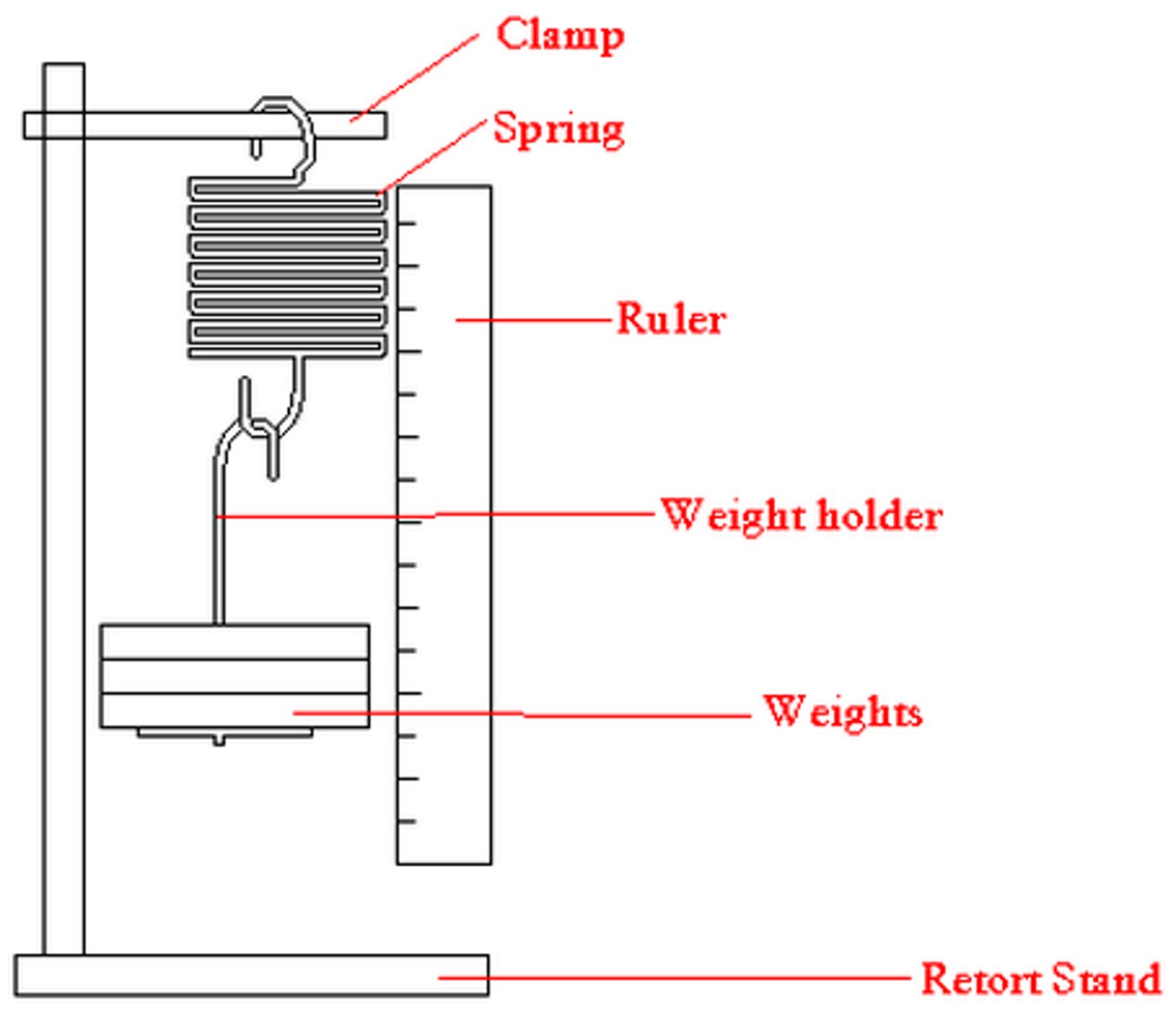
Hooke's law says...
the extension of a spring (or other material) is proportional to the force applied to it
What is elastic behaviour?
The ability of a material to recover its original shape after the forces causing deformation have been removed.
What is the Conservation of Momentum?
(Paper 2 only)
The total momentum of objects before a collision is equal to the total momentum of objects after the collision.
Momentum =
(Paper 2 only)
mass x velocity
p = m x v
Car safety features....
(Paper 2 Only)
crumple zones, seat belts and airbags increase
the time taken for momentum to reach 0, and therefore reduce the force exerted on the passenger.
Relationship between Force, change in momentum, and time taken.
(Paper 2 Only)
Force = change in momentum / time taken
F = (m x v - m x u) / t
(this equation is given to you)
Newton's Third Law...
(Paper 2 Only)
For every action force there is an equal and opposite reaction force.
(If you push on something, it pushes back on you with the same amount of force in the opposite direction)
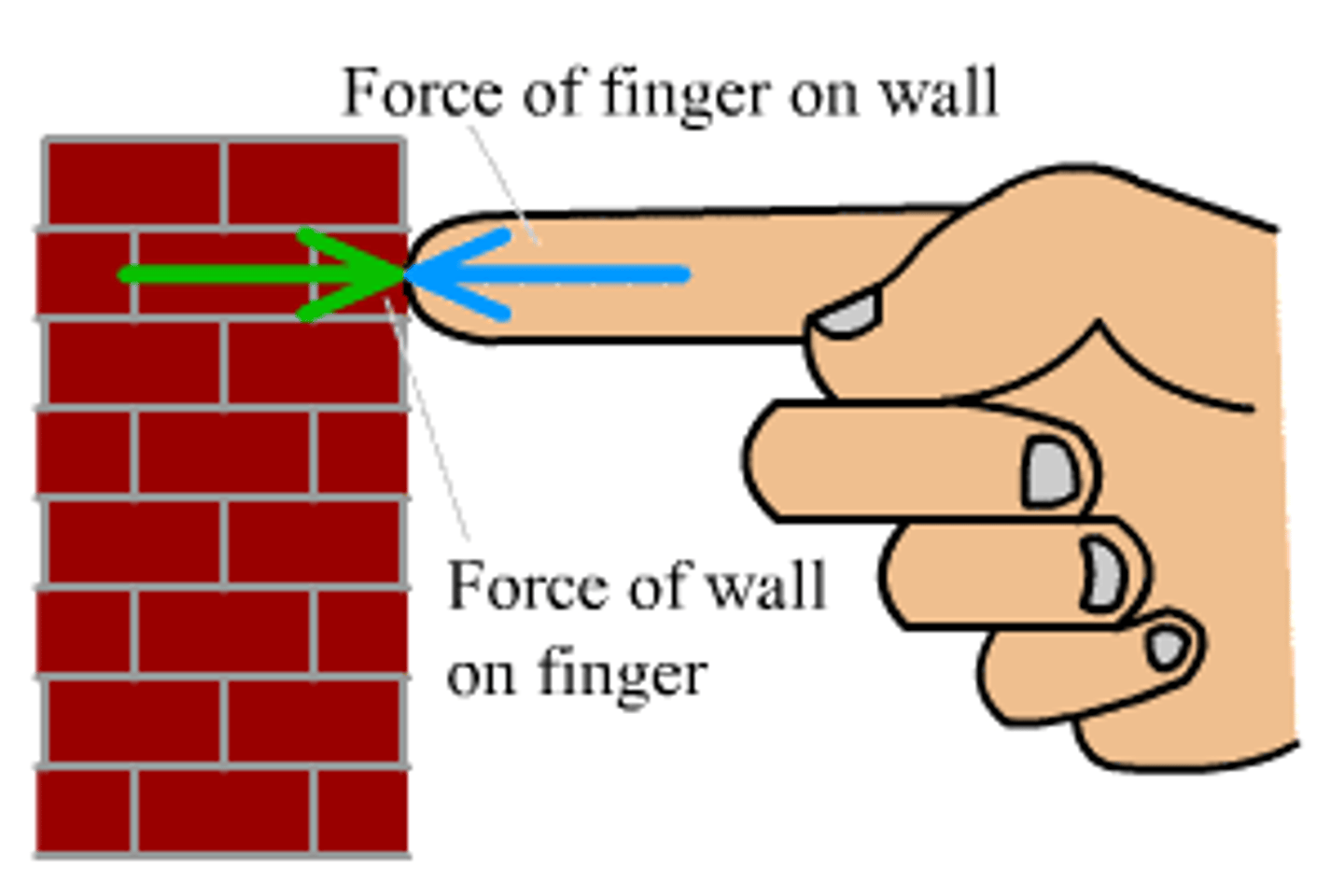
What is a moment?
(Paper 2 only)
The turning effect of a force around a fixed point called a pivot.
Moment (Nm) =
(Paper 2 only)
force x perpendicular distance from the pivot
Centre of gravity
(Paper 2 only)
The point at which the weight of the object appears to act. (For a uniform object, this is in the middle)
Principle of Moments....
(Paper 2 Only)
For a body in rotational equilibrium, the sum of the anticlockwise moments about a point is equal to the sum of the clockwise moments about the same point
A beam is supported at its two ends. A 100N weight is placed in the middle.
What are the upwards forces at each end?
What happens if the weight is moved nearer to one end or the other?
(Paper 2 Only)
The 100N acts downwards in the middle of the beam, so 50N acts upwards at each end.
If the weight is moved nearer one end, the force at that end increases, and the force at the other end decreases (e.g. 80N at one end, 20N at the other). The two forces must still add up to 100N.
Unit of Current (I)
Amp or Ampere (A)
Unit of Charge (Q)
Coulomb (C)
Unit of Energy (E)
Joule (J)
Unit of Resistance (R)
Ohm (Ω)
Unit of Voltage (V)
Volt (V)
Unit of Power (P)
Watt (W)
What is double insulation?
many electrical appliances have casing made from an insulator such as plastic, rather than metal. The electrical parts parts of the device cannot therefore be touched. The appliance is said to have double insulation. Such appliances will only have two-wire cables as they don't need the earth wire
What is a circuit breaker?
What is its advantage over a fuse?
a switch that opens and stops the current flowing in a circuit when the current is too high.
Sometimes called a Residual Current Circuit Breaker (RCCB).
It does not need replacing like a fuse does, it just needs resetting.
What is the role of an Earth Wire?
To carry away electrical current or discharge and object to make the user safe, and to protect the appliance.
They are found in appliances with metal casing.
Draw the symbol for a fuse.
What does a Fuse do?
If the normal operating current of an appliance is 3.5A, which fuse would you need, 3A, 5A, or 13A
It breaks the circuit by melting when the current is too high.
5A
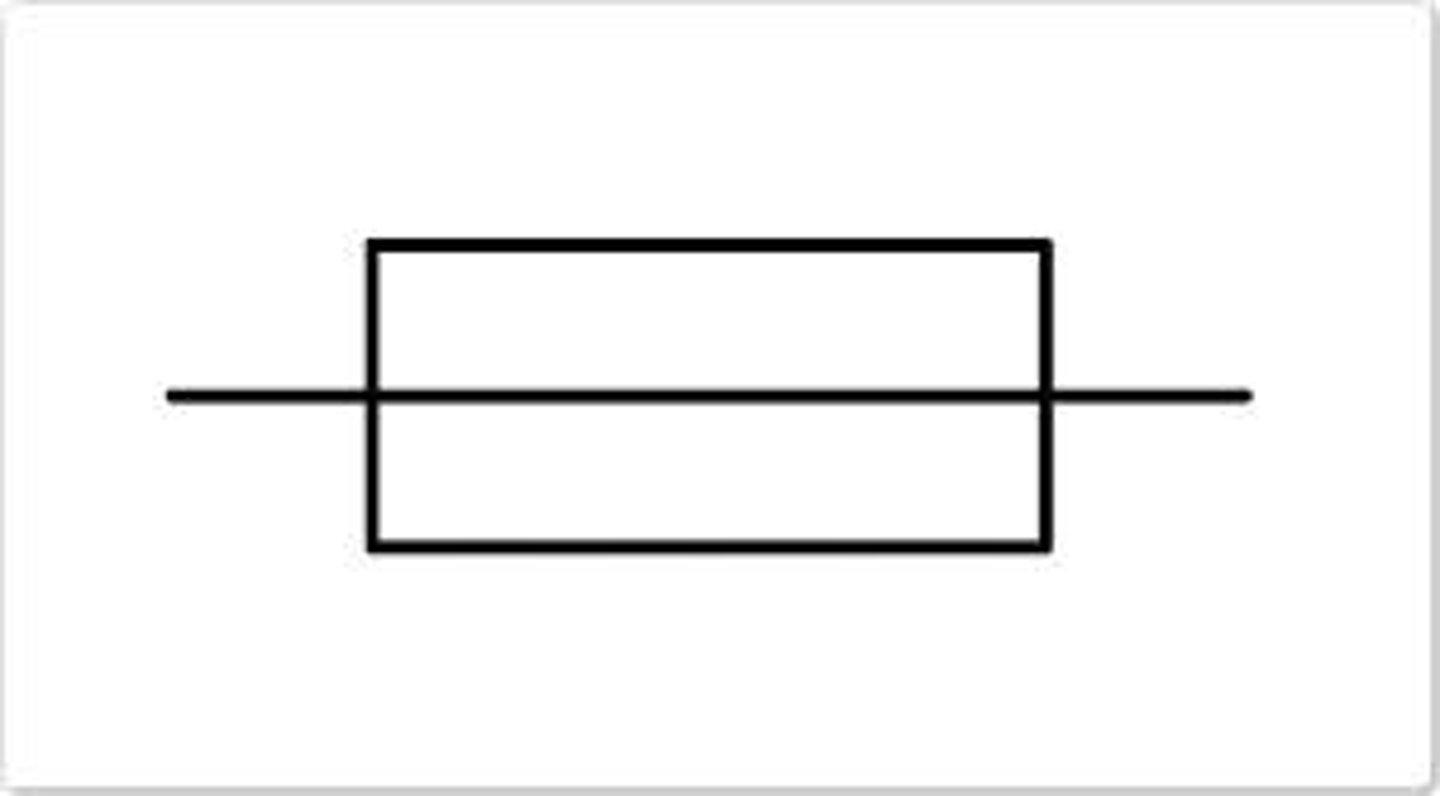
What does the Live Wire do?
Carries the current to the appliance
What does a Cable Grip do?
Stops the cable and wires from being pulled out of the plug
What does the Neutral Wire do?
Completes the circuit and carries away current
Electrical Power =
Current x Voltage
P = I x V
Electrical Energy Transferred =
Current x Voltage x time
E = I x V x t
(this equation is given to you)
Power =
Work Done / time taken
W / t
What is A.C.?
Alternating Current where the flow alternates in direction (mains electricity supply)
What is D.C.?
Direct Current where the flow is in one direction only (battery)
What is an Electrical Conductor and give an example? (Paper 2 only)
A material that allows a current to flow.
Metals (e.g. Copper, Aluminium, Gold, etc.)
What is an Electrical Insulator and give an example? (Paper 2 only)
Do not allow a current to flow.
Rubber, glass and plastics are examples.
What particles are found in the nucleus of an atom?
protons and neutrons
Uses of static electricity include....
(Paper 2 only)
Ink jet printers, photocopiers and spray paint
A Static charge can be built up on an insulator by....
(Paper 2 only)
Friction between two objects causing electrons to transfer from one material to the other, leaving one material with a negative charge (gained electrons), and the other with a positive charge (lost electrons).
What does a resistor do?
Draw the symbol for a resistor
It reduces the current due to collisions between electrons and lattice ions in the resistor, causing a transfer of energy and an increase in temperature.
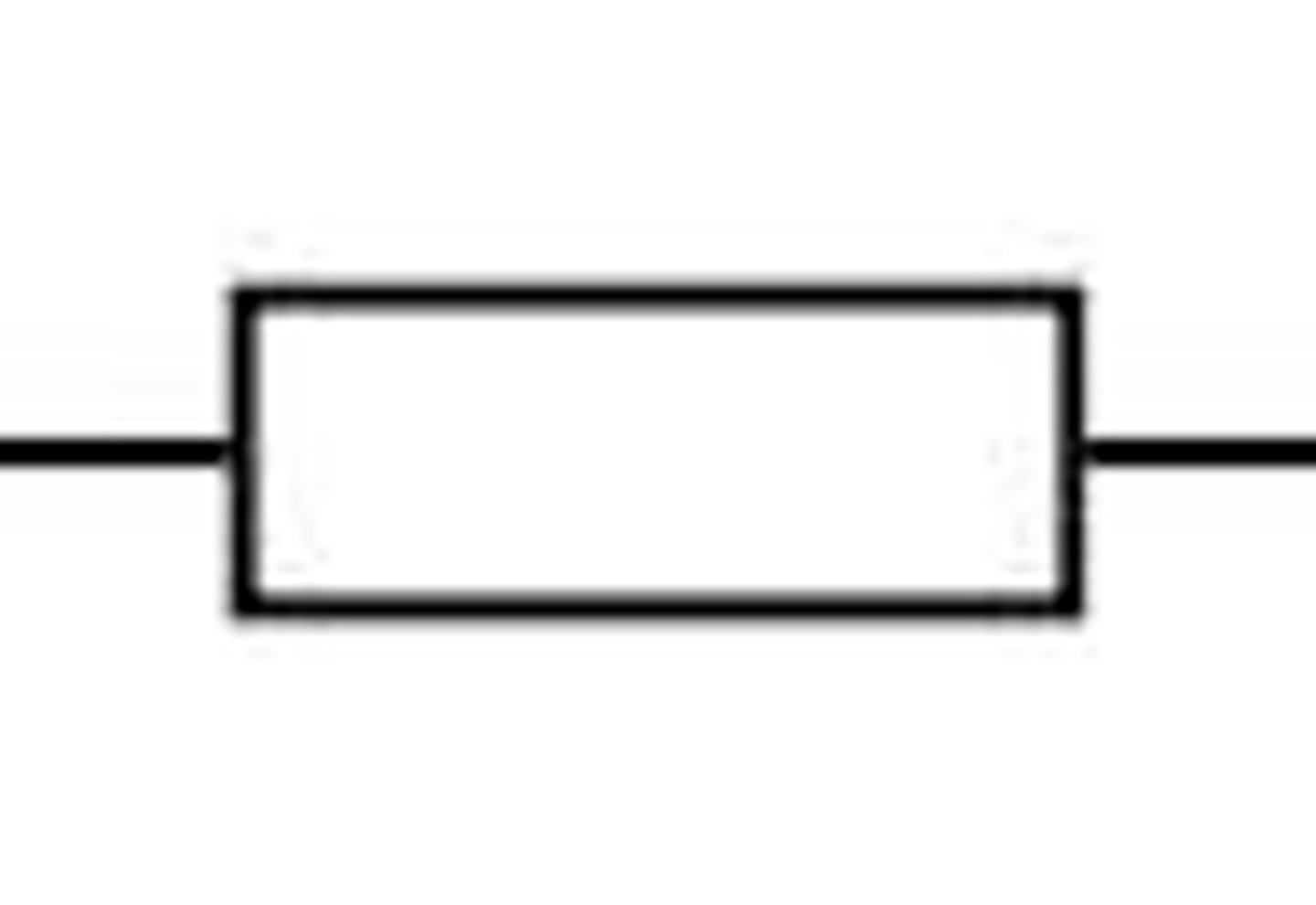
Draw the symbol of a thermistor.
How does temperature affect the resistance of a Thermistor? (How does this change of resistance affect the current through the Thermistor?)
Temperature Up Resistance Down - Current Up (and the opposite way round too)
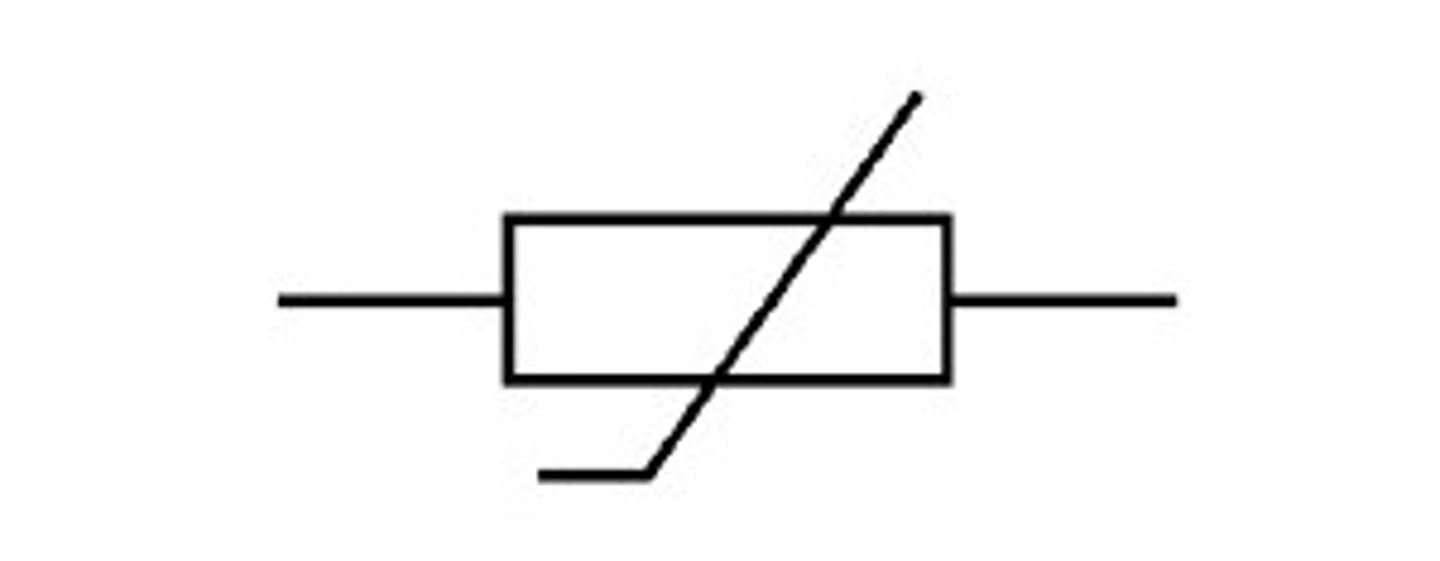
What does an Ammeter do?
Draw a circuit showing where you would add an Ammeter
An Ammeter measures Current. An Ammeter is always connected in series (or in line with the component).
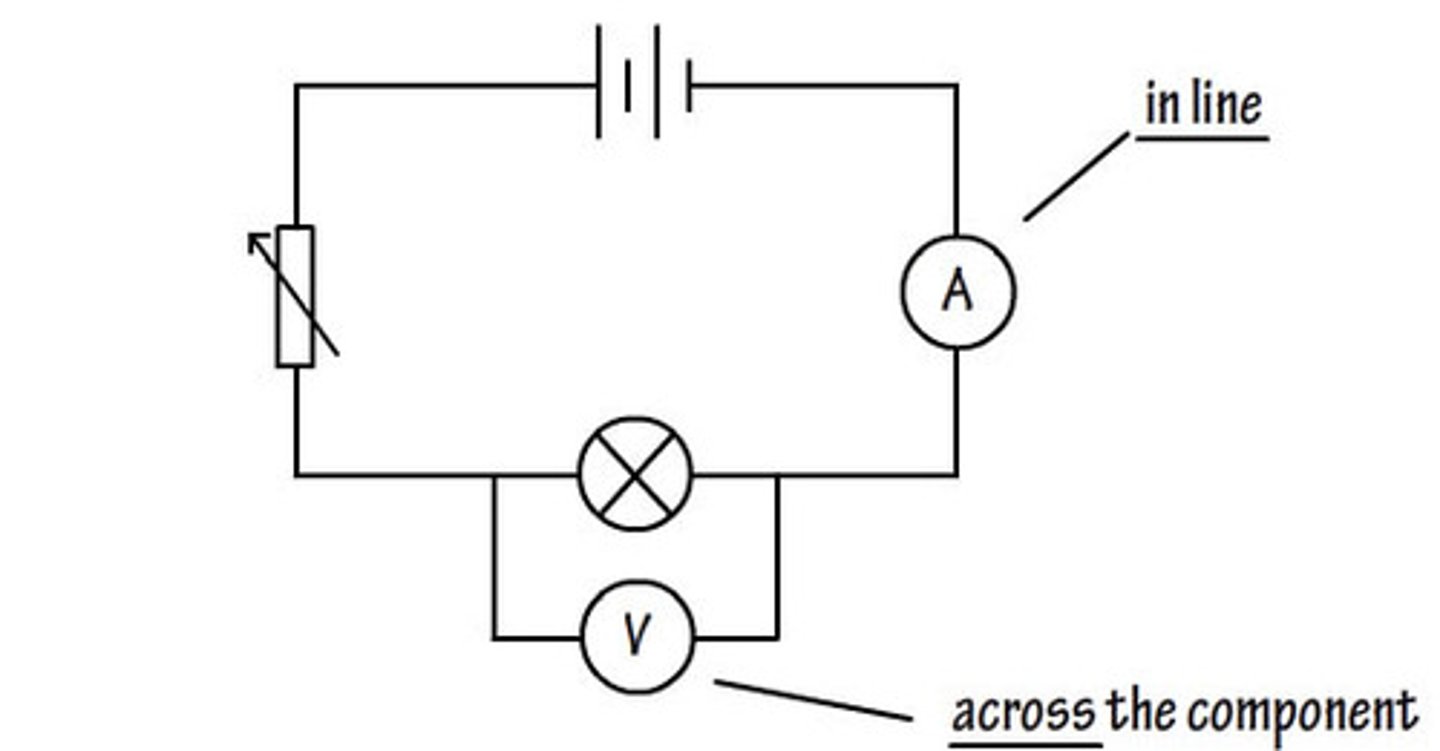
What does a Voltmeter do?
Draw a circuit showing where you would add a Voltmeter
A Voltmeter measures Voltage. A Voltmeter is always connected in parallel (or across the component).
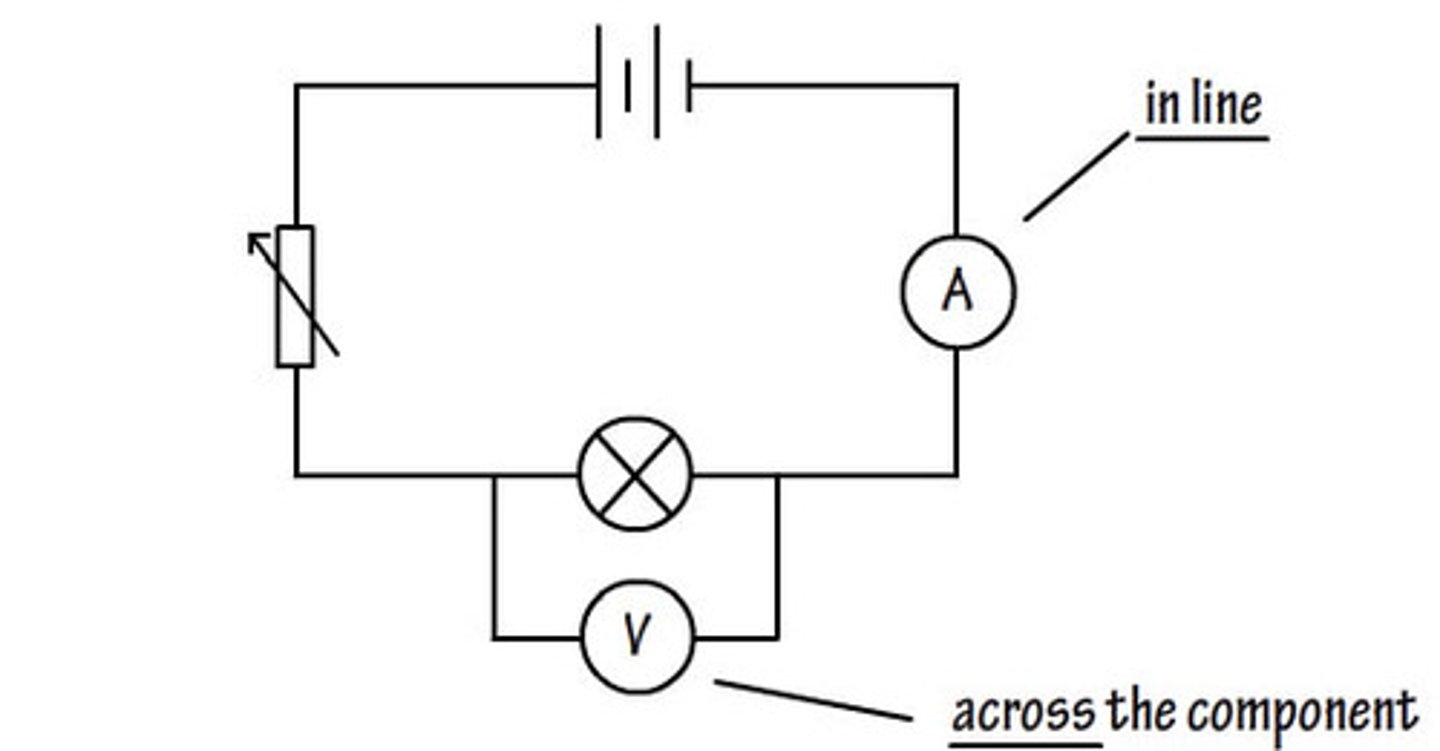
Draw the symbol of an LDR.
How does light intensity affect the resistance of a Light-Dependent Resistor (LDR)? (How does this change in resistance affect the current through the LDR?)
Brightness Increase Resistance Decrease - Current Up (and the opposite way round too)
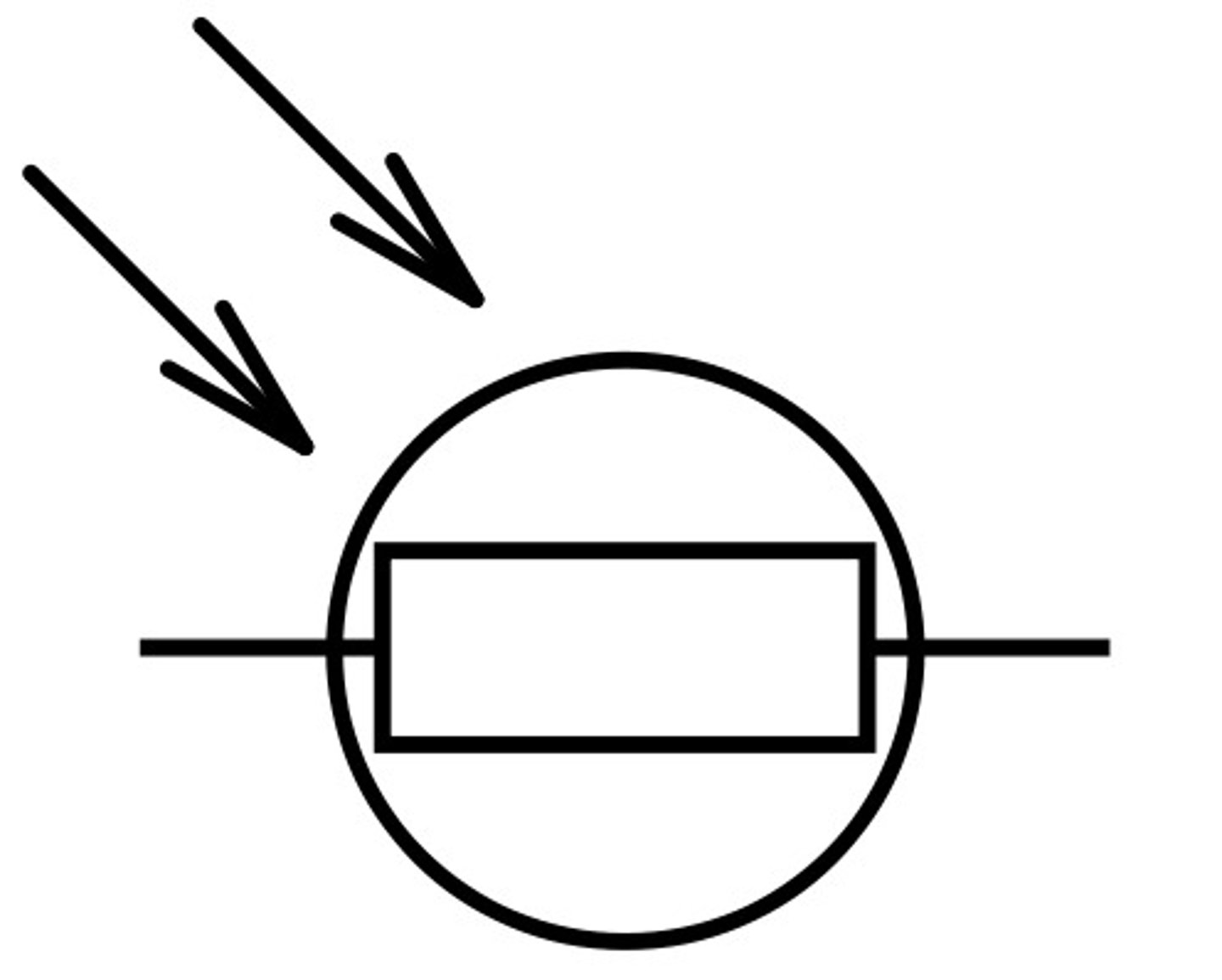
Draw the symbol of a Variable Resistor.
What does it do?
Controls the current in a circuit by altering the resistance in the circuit. Higher Resistance, lower current.
Lower Resistance, higher current.

Draw the symbol of a Diode.
What does it do?
Allows current to flow in one direction only.
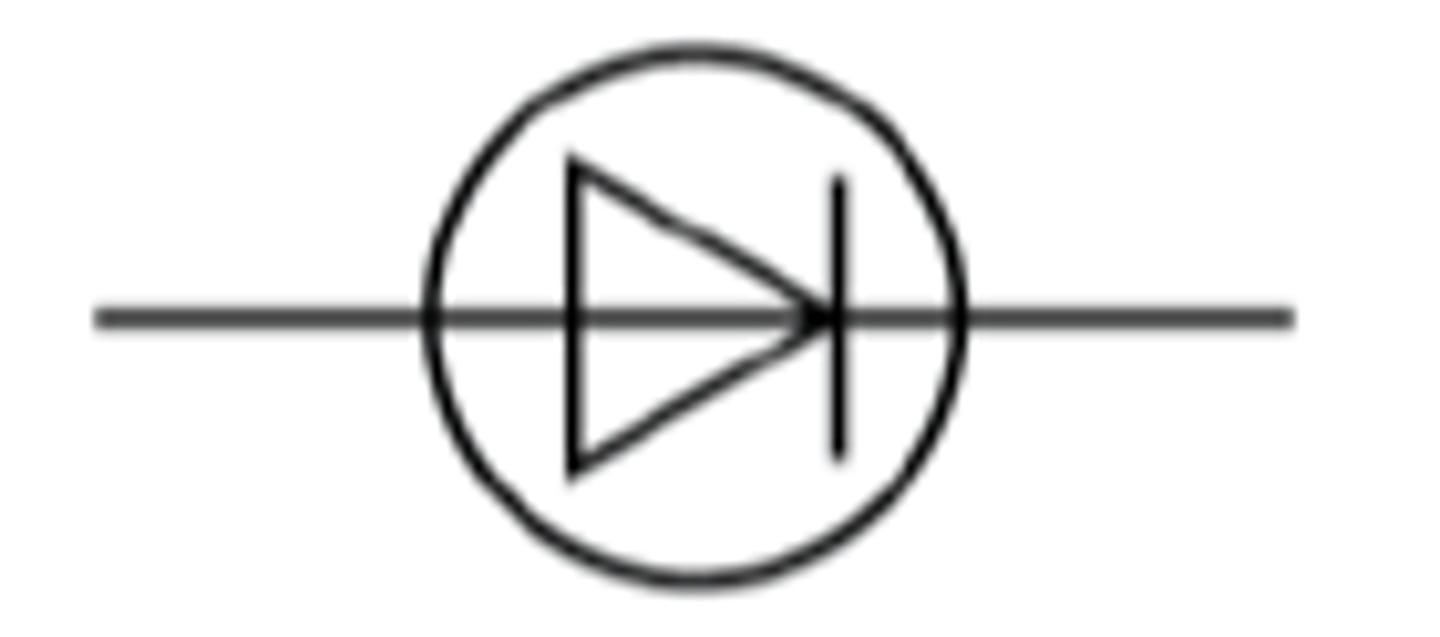
Draw the symbol of a Light Emitting Diode (LED).
What does it do?
Allows current to flow in one direction only. Indicates a current is flowing.
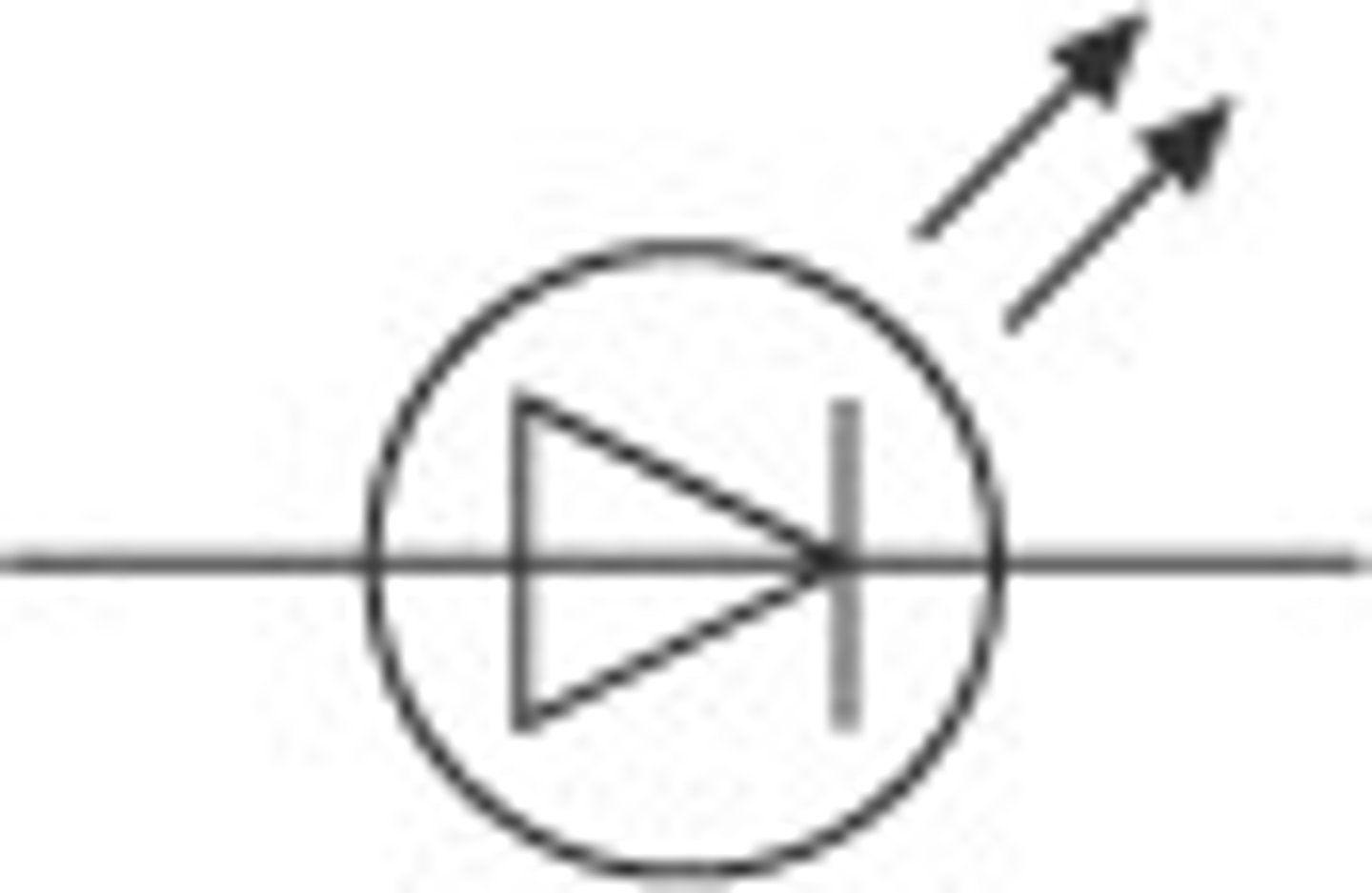
Draw the symbol for a filament bulb.
What does it do?
Emits Light.
Indicates that a current is flowing.
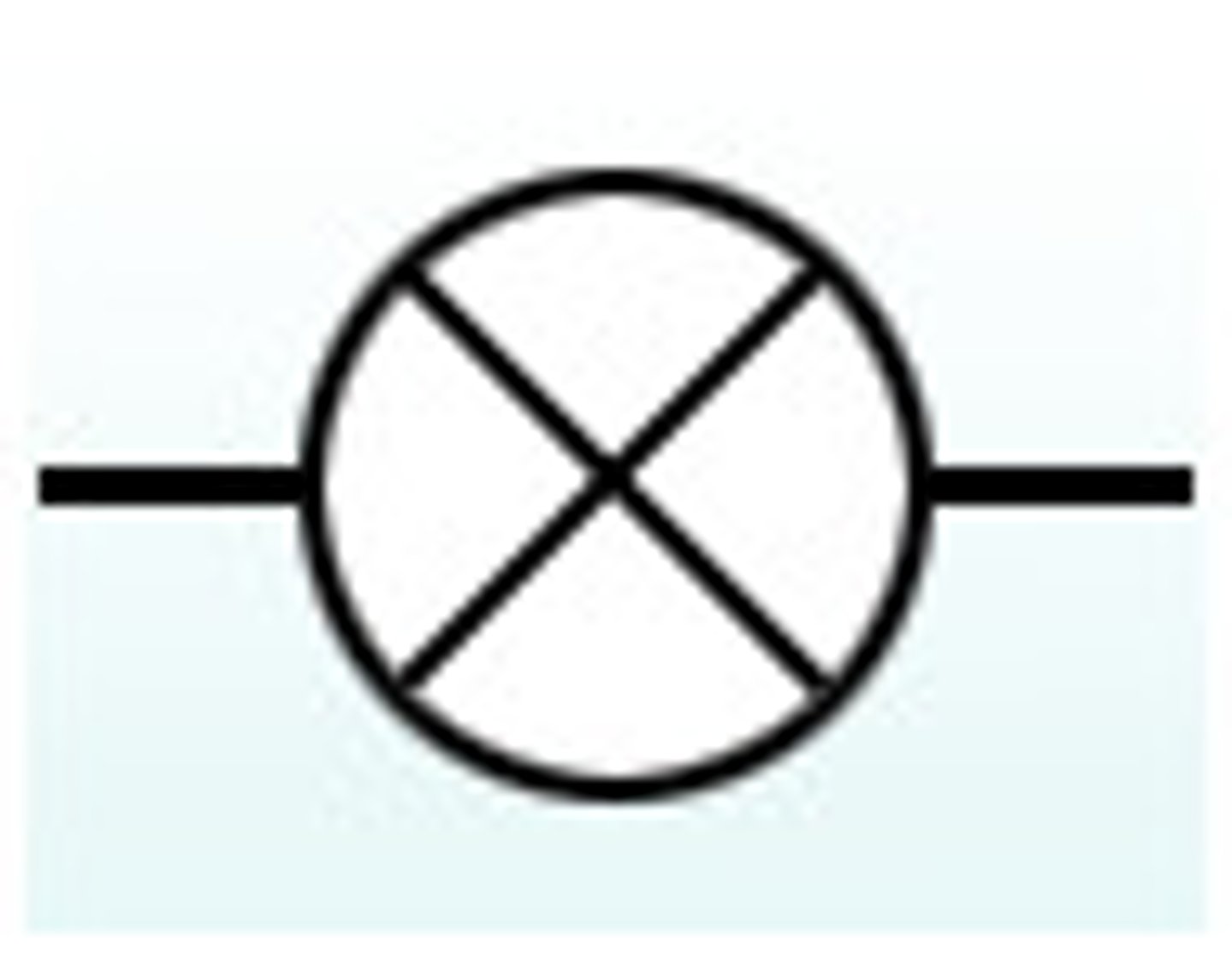
Draw the symbol for a cell.
What does it do?
Provides a voltage to the circuit.
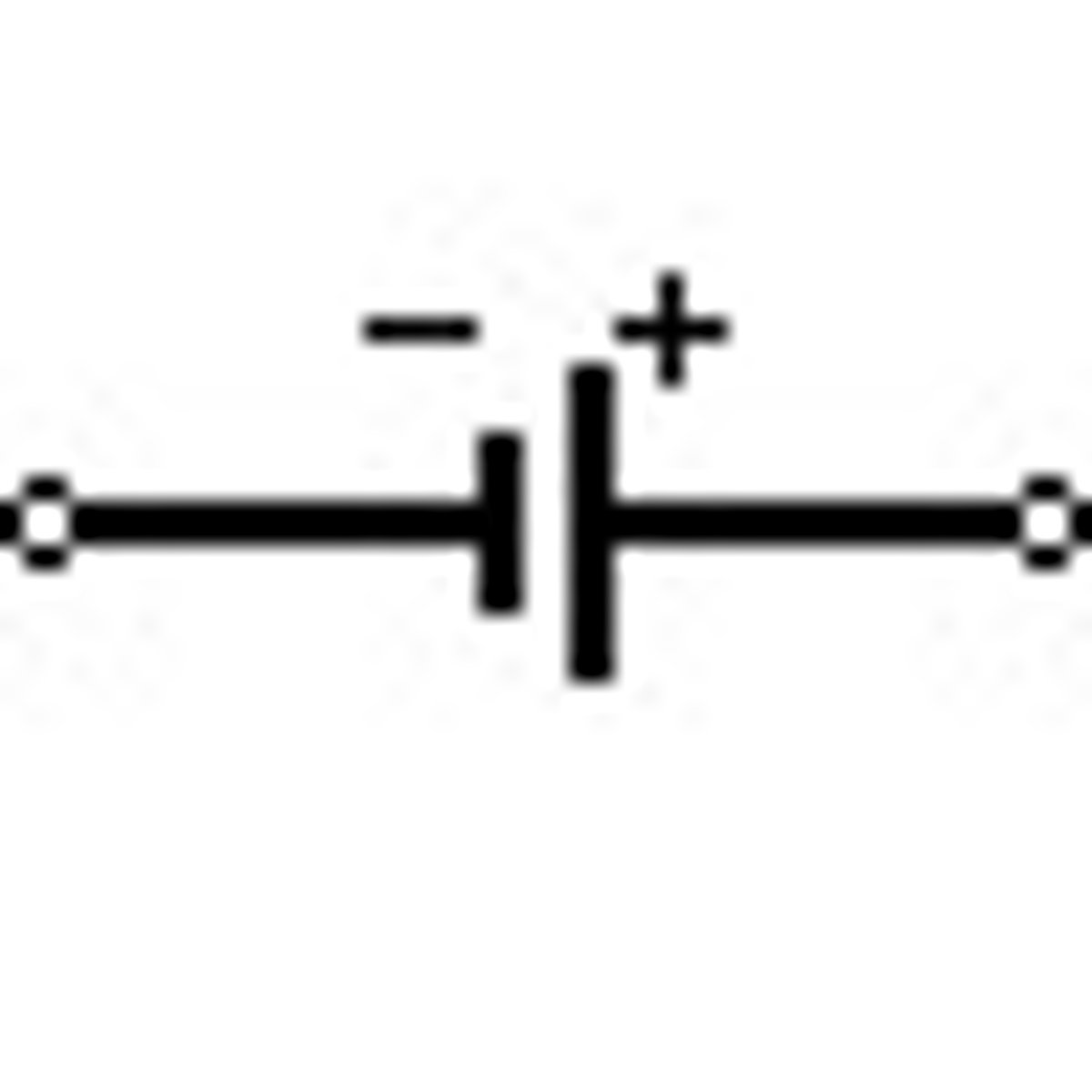
Draw the symbol for an open and a closed switch.
What does it do?
Allows current to flow when closed, and stops current when open.
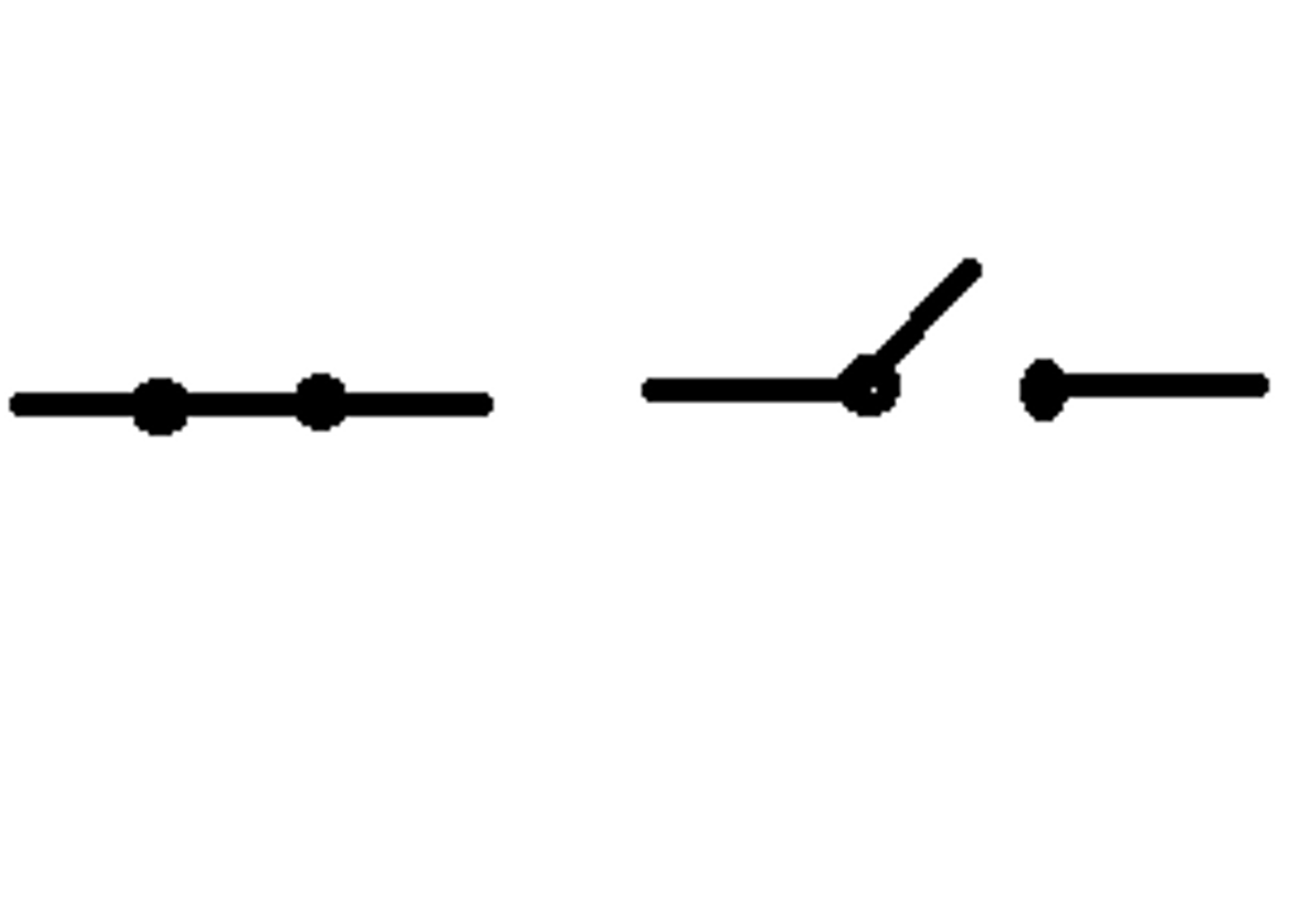
Ohm's Law says....
Current is proportional to voltage (not true for all components).
Ohm's Law: Voltage =
Current x Resistance
V = I x R
Current is a flow of....
Negatively charged electrons
Conventional Current is....
The rate of flow of positive charge from positive to negative.
A Series Circuit....
- Has one loop
- The current is same all the way around
- The voltage is shared between components
- If one part breaks, the whole circuit stops working
A Parallel Circuit....
- Has more than one pathway for current
- The Current splits down different paths
- The Voltage is the same across every path
- If one part of the circuit, other parts of the circuit can keep working
How does the current in a series circuit depend on the voltage supplied?
In general, increasing voltage increases the current.
Draw the Current-Voltage graphs for a fixed resistor, a filament lamp, and a diode.
Describe how to investigate these experimentally.
- Place the component of interest in a series circuit with a power supply and a variable resistor.
- Place an ammeter in series with the component, and a voltmeter across the component.
- Use the variable resistor to vary the current in the circuit.
- Record the voltage for a range of current values.
- Plot a graph of Current against Voltage
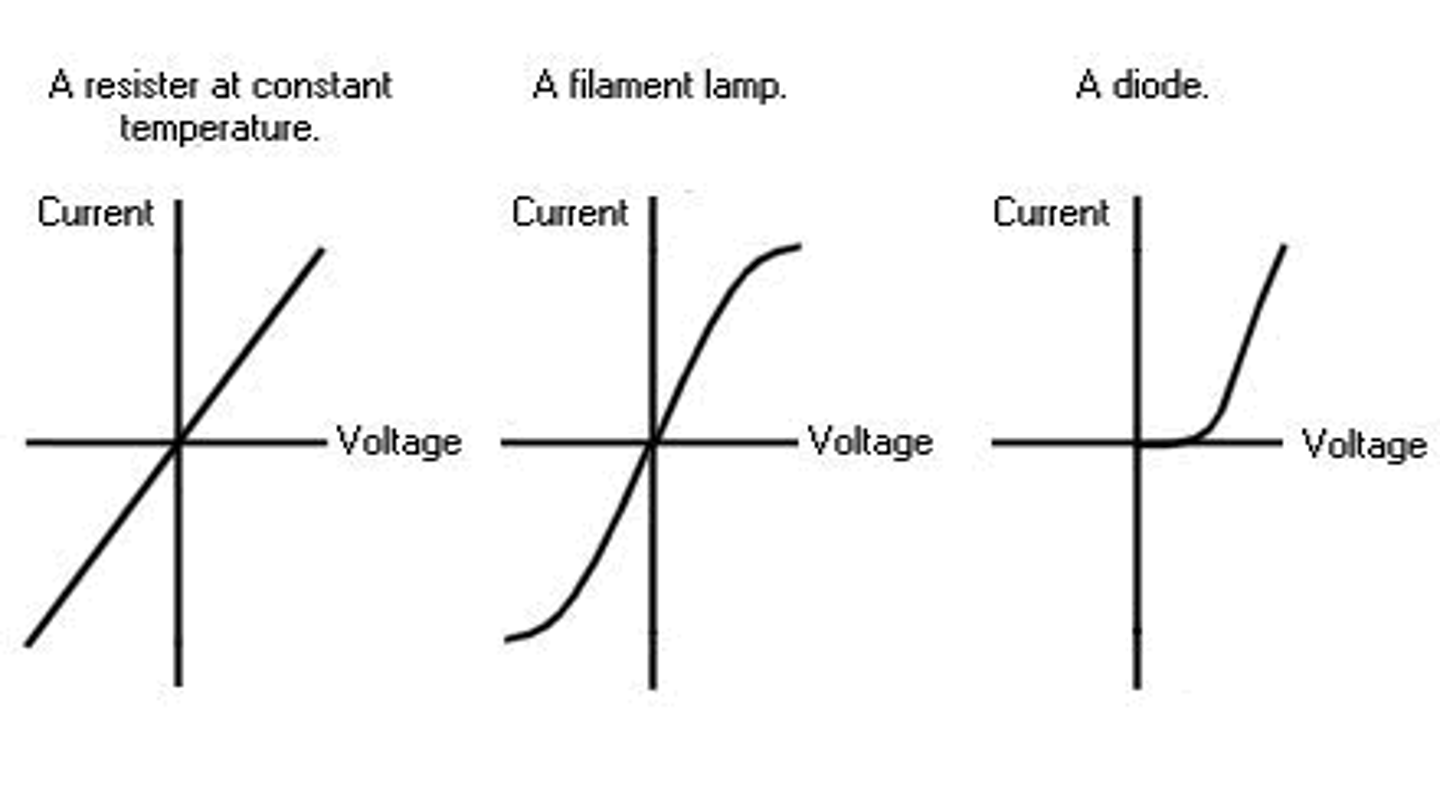
Current (Amps) =
Charge (Coulombs) / Time (seconds)
I = Q / t
Current is conserved at a junction.
What does this mean?
The current into a point is equal to the current out of a point. This is because charge cannot be lost in the circuit.
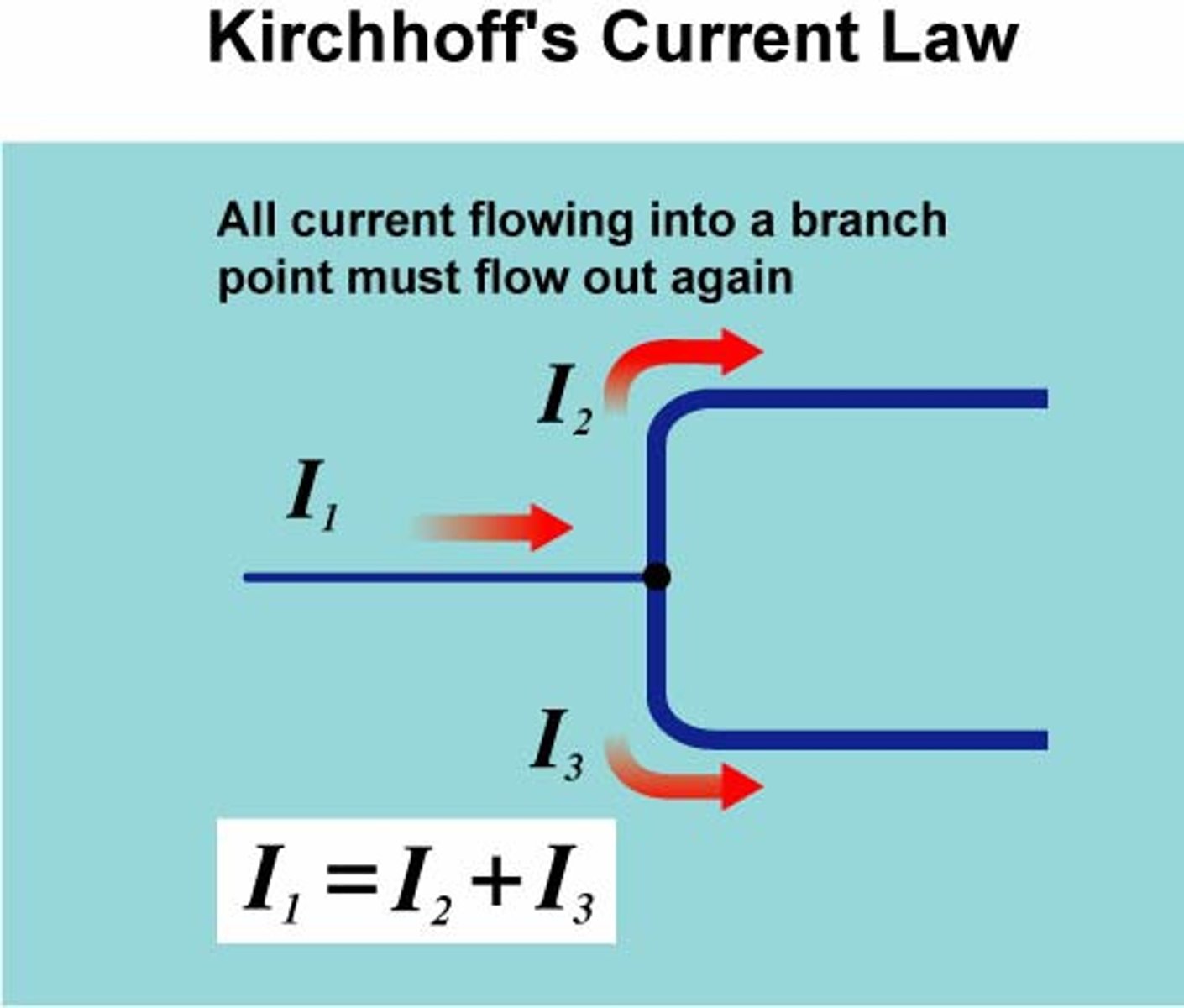
A bulb is connected in series with a bulb that has twice the resistance. How will the voltage across each bulb compare?
The bulb with more resistance will take more energy so there will be a larger voltage across the second bulb. If the resistance is double then is will take double the voltage.
For example, if 6V is available, the first bulb will take 2V and the second bulb will take 4V.
Voltage is...
the energy transferred per unit of charge.
Voltage =
Energy Transferred / Charge
V = E / Q
Like charges _____ and opposite charges ______
(Paper 2 Only)
1. repel
2. attract
What are the potential dangers of electrostatic charges?
(Paper 2 Only)
Electric charge can discharge and cause a spark that could ignite a fuel causing a fire or explosion.
Sparks can damage electrical equipment.
What does it mean to induce a charge? For example, when a charge balloon is placed near a wall, or when a lightning cloud is near a lightning rod.
Induction of charge is when the charge of one object causes another object to become the opposite charge due to attraction or repulsion.
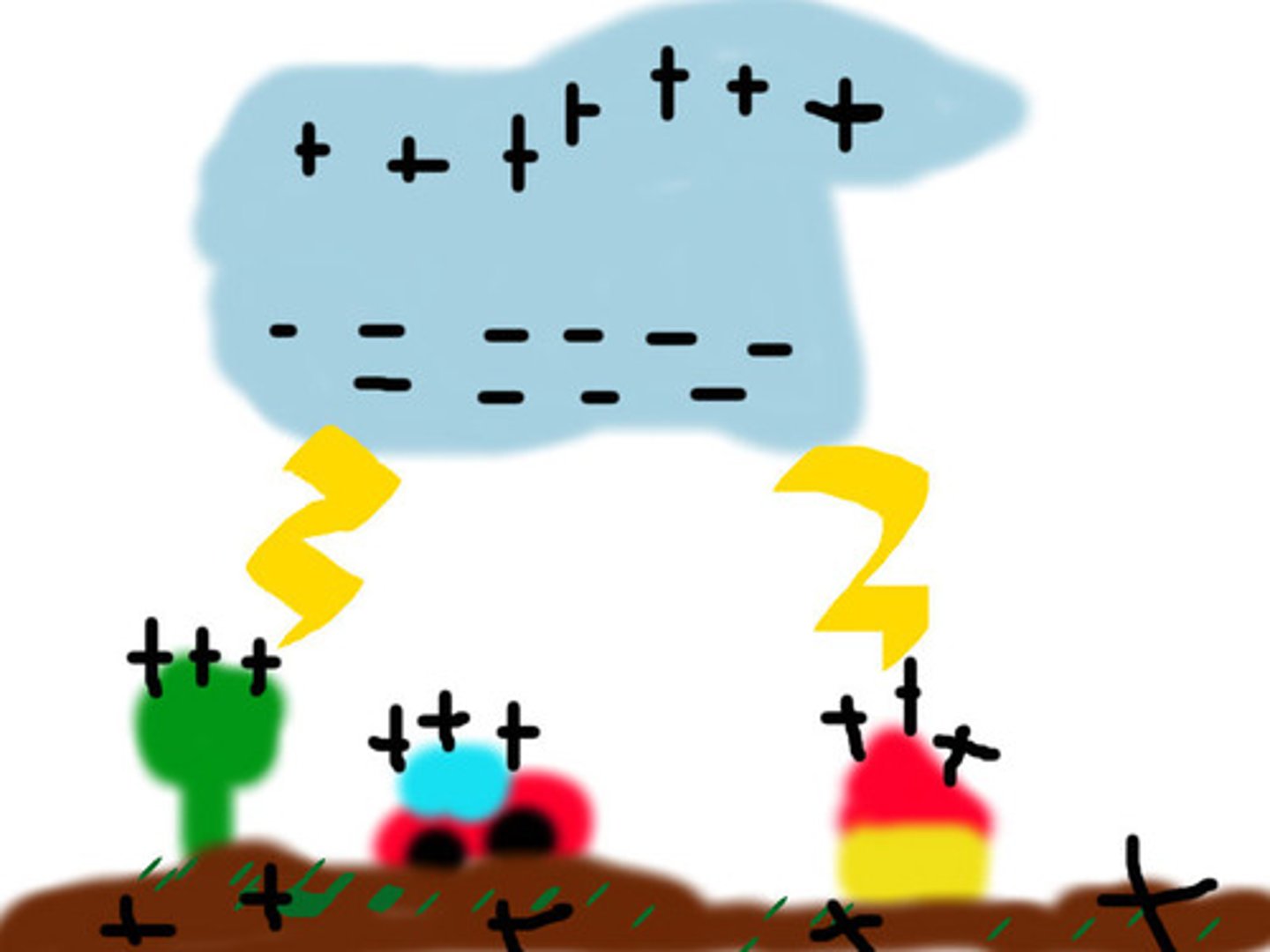
Waves transfer....
Waves do not transfer....
..... energy and information
..... matter
2 types of waves....
transverse and longitudinal
Draw and label a Transverse wave.
Give an example.
example: light wave

Draw and label a Longitudinal wave.
Give and example.
example: sound wave

Wavelength is....
the distance from a point on one wave to the same point on the next wave. (Easiest to measure it from the peak of one to the peak of the next)
Amplitude is measured from....
the middle to the peak. (NOT FROM TROUGH TO PEAK)
Frequency is....
the total number of waves per second.